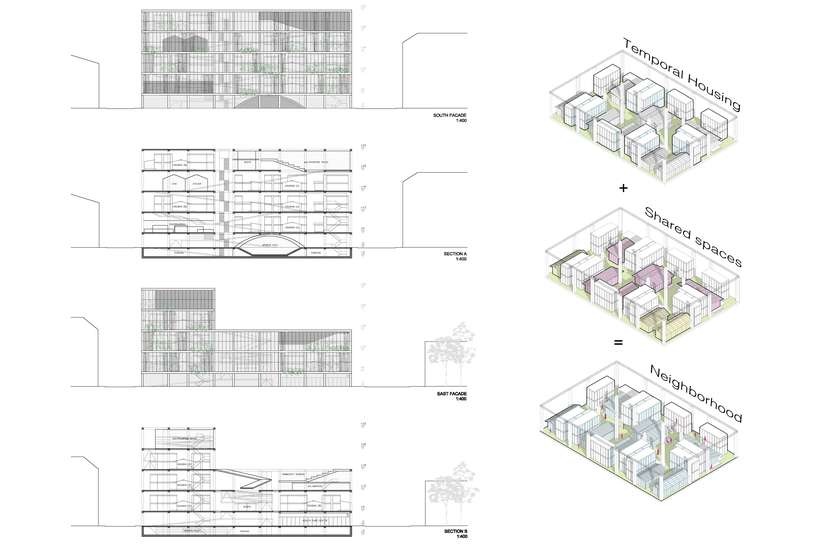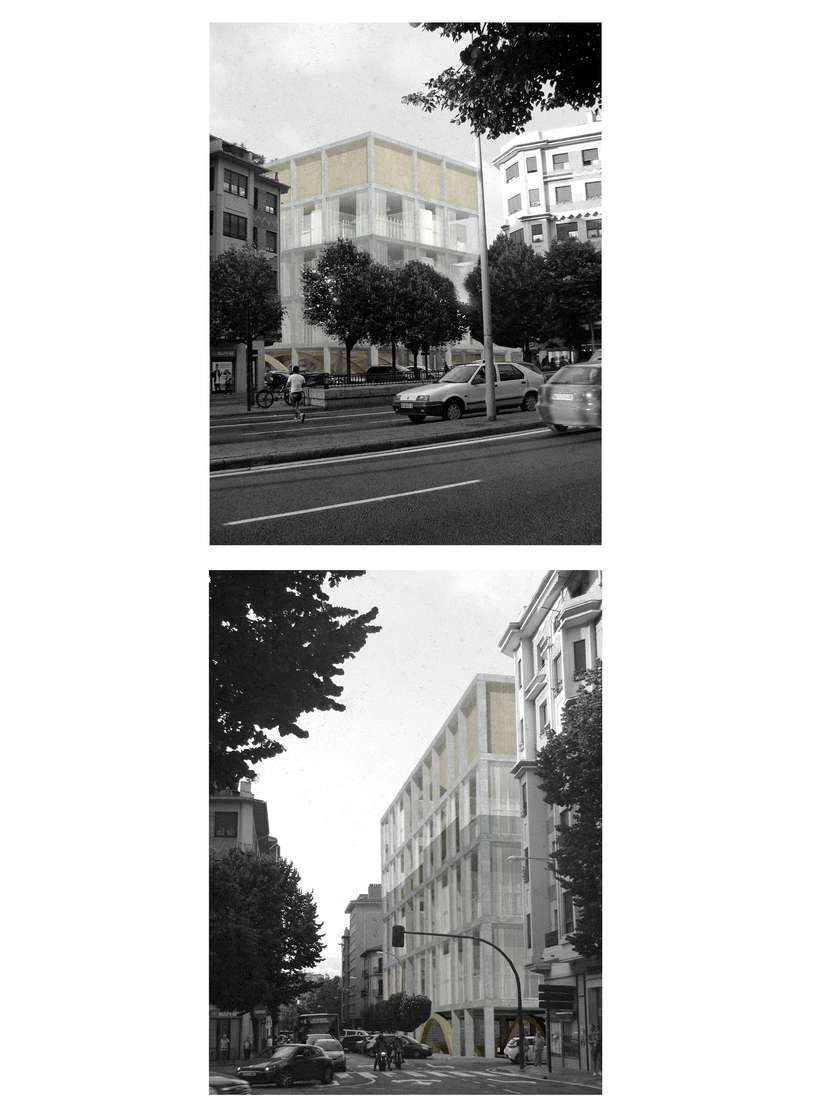Idea by
Matías Grimaldi
https://matiasgrimaldi.wordpress.com/
Call for ideas 2018
Emergency hybrid infrastructure
Emergency hybrid infrastructure
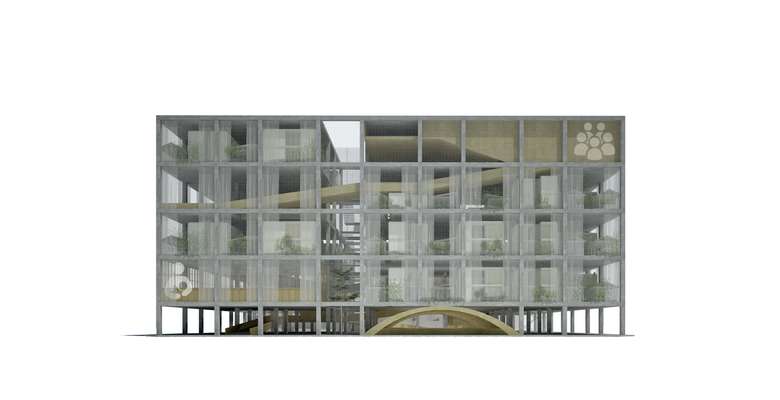
In the actual humanitarian crisis, where vulnerable people escape from political, economic, environmental and religious conflicts, architecture must stop to thinking walls and borders, to imaging interphases, mechanisms and strategies of gradual absorption and slow canalization of the problem: Infrastructures with the capacity to respond urgent situation and at the same time project opportunities in the future.
The prototype rethinking the actual refugees' reception centers (RRC), proposing a little change:
A) Refugges reception centers need to be located in city centers., nor peripheries.
B) Mix temporal housing with facilities (kindergarten, first AID room, ateliers, co-working, marketplaces, shops, sports field, orchards, gardens, multifunctional spaces, etc).
C) These infrastructures could be reuse as public space and communitarian facilities in the future.
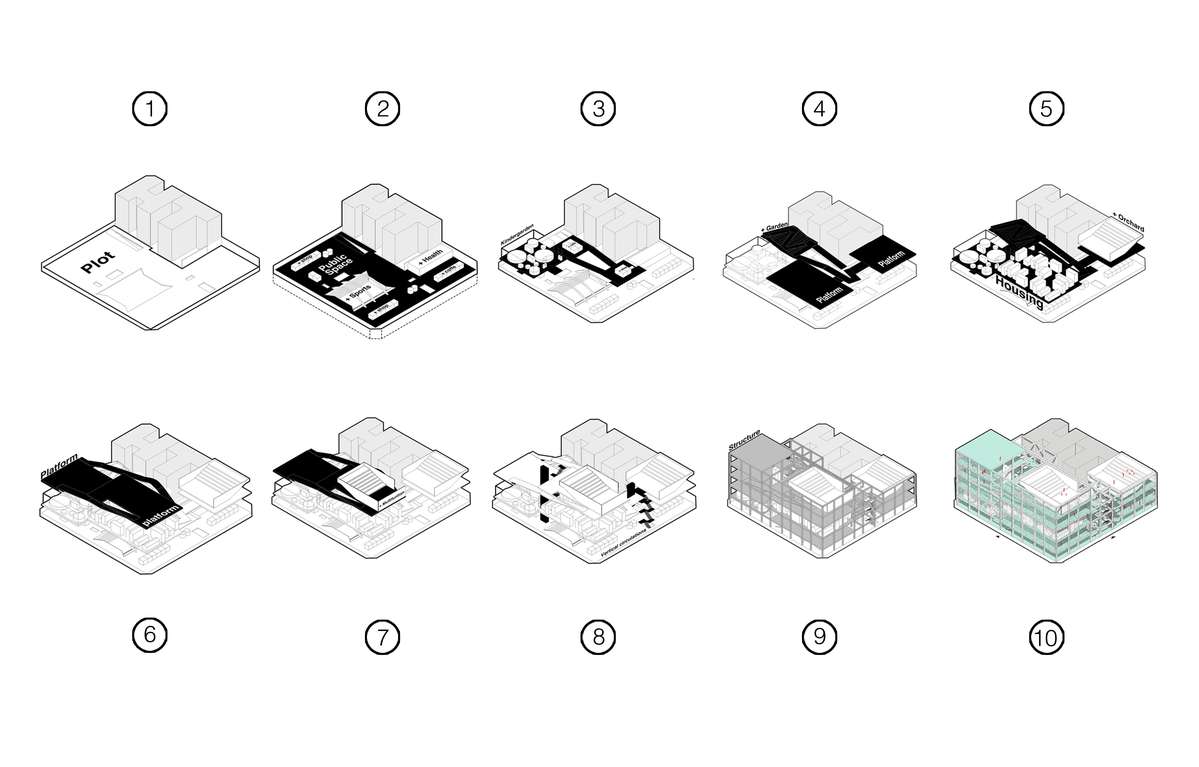
Aims of the project:
1) Respond to the precariousness of flow populations
2) Offer temporal housing and basic services. (drinking water, electricity, toilet, internet)
3) Offer spaces for opportunities (production and exchange)
4) Improve health, education, and recreation of RRC conditions.
5) Reconfigure multicultural migration society.
6) Cultural link between hostess and visitor.
7) Be adaptable to different plot condition.
8) Cities density and hybridization improvement.
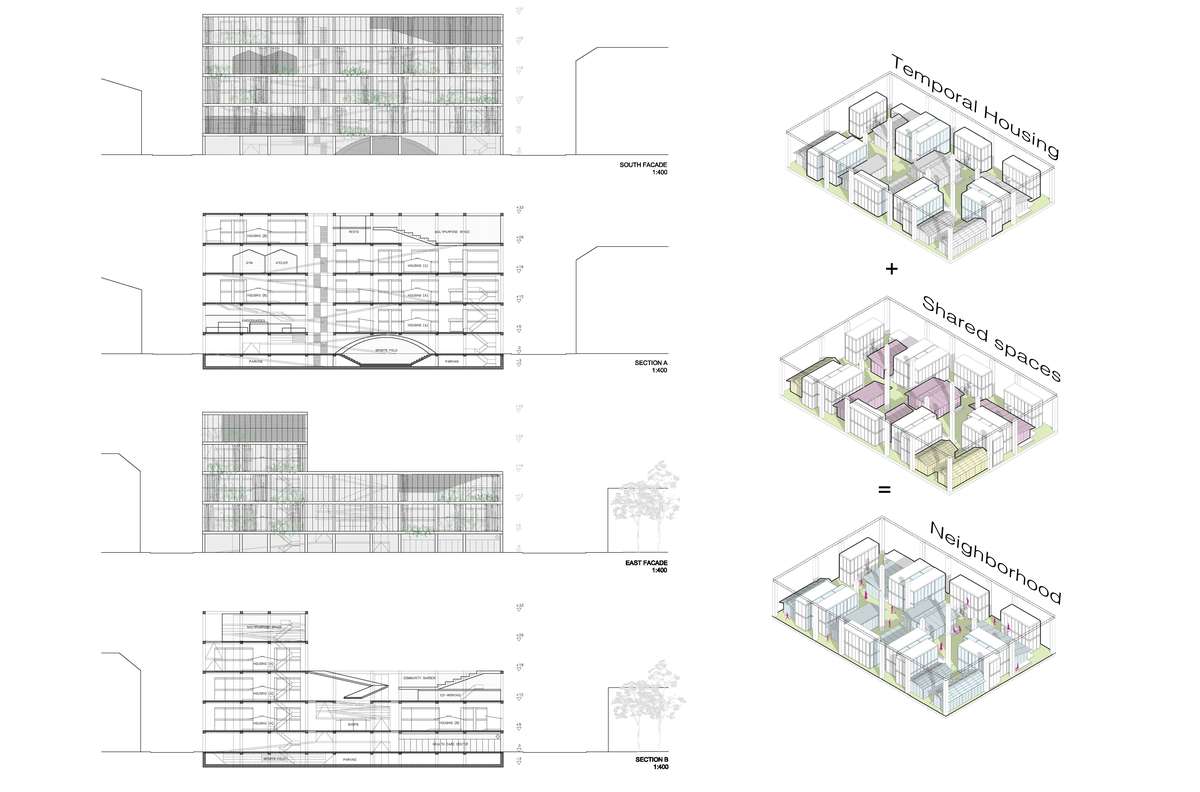


Emergency hybrid infrastructure
Emergency hybrid infrastructure

In the actual humanitarian crisis, where vulnerable people escape from political, economic, environmental and religious conflicts, architecture must stop to thinking walls and borders, to imaging interphases, mechanisms and strategies of gradual absorption and slow canalization of the problem: Infrastructures with the capacity to respond urgent situation and at the same time project opportunities in the future.
The prototype rethinking the actual refugees' reception centers (RRC), proposing a little change:
A) Refugges reception centers need to be located in city centers., nor peripheries.
B) Mix temporal housing with facilities (kindergarten, first AID room, ateliers, co-working, marketplaces, shops, sports field, orchards, gardens, multifunctional spaces, etc).
C) These infrastructures could be reuse as public space and communitarian facilities in the future.

Aims of the project:
1) Respond to the precariousness of flow populations
2) Offer temporal housing and basic services. (drinking water, electricity, toilet, internet)
3) Offer spaces for opportunities (production and exchange)
4) Improve health, education, and recreation of RRC conditions.
5) Reconfigure multicultural migration society.
6) Cultural link between hostess and visitor.
7) Be adaptable to different plot condition.
8) Cities density and hybridization improvement.
